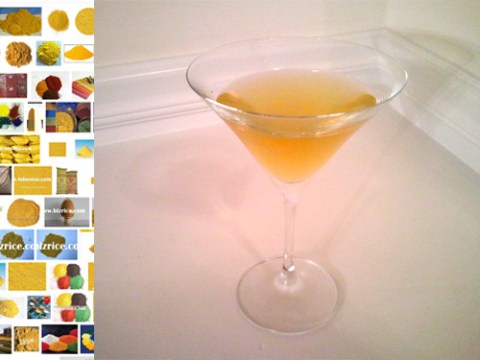While I was initially posting these cocktails for Sunday in the Park with George for my friends I was called out for unintentionally teasing those unable to partake due to age or to a little human growing inside of them. My wife does not drink, so occasionally I try to put together something unique and tasty for the teetotaler. It seemed only fair to have at least one color within Seurat’s palette inspire a nonalcoholic beverage.
Cadmium Yellow
- 3.0 oz. pineapple juice
- 1.0 tsp cream of coconut
- 1 barspoon ginger rice vinegar
- 4 dashes Fee Brothers’ Celery bitters
- 1 pinch celery salt
- 4.0 oz. Q Ginger Ale
Shake all but ginger ale with ice and strain into highball over ice.
Top with ginger ale and garnish with a mint sprig.
Cadmium yellow is a bright and vibrant pigment (hex value of #FFF500, which is too bright to color this text with over a white background) that seemed to just call for pineapple juice as a base. Coconut of course pairs nicely with that. At that point I just started to have fun, reaching for a ginger rice vinegar I had recently picked up that I thought would cut into the sweetness of the pineapple and coconut nicely and seemed to be pushing me into a Thai direction. Thus, although I know it sounds a bit odd (and scared some of my castmates as I was mixing), I added in the celery elements. I love adding pinches of salt or saltwater to drinks, and the celery salt with the celery bitters really took the drink in an interesting direction. I topped it all off with some Q ginger ale (you can use another, but I personally favor Q) and some mint for a nice aromatic finish. Generally I don’t go for highballs or drinks topped with soda (sugary or not) as I tend to find these dominate over the liquor. However, in a drink without liquor and with such a strong, flavorful base, the ginger ale was a welcome finish.









